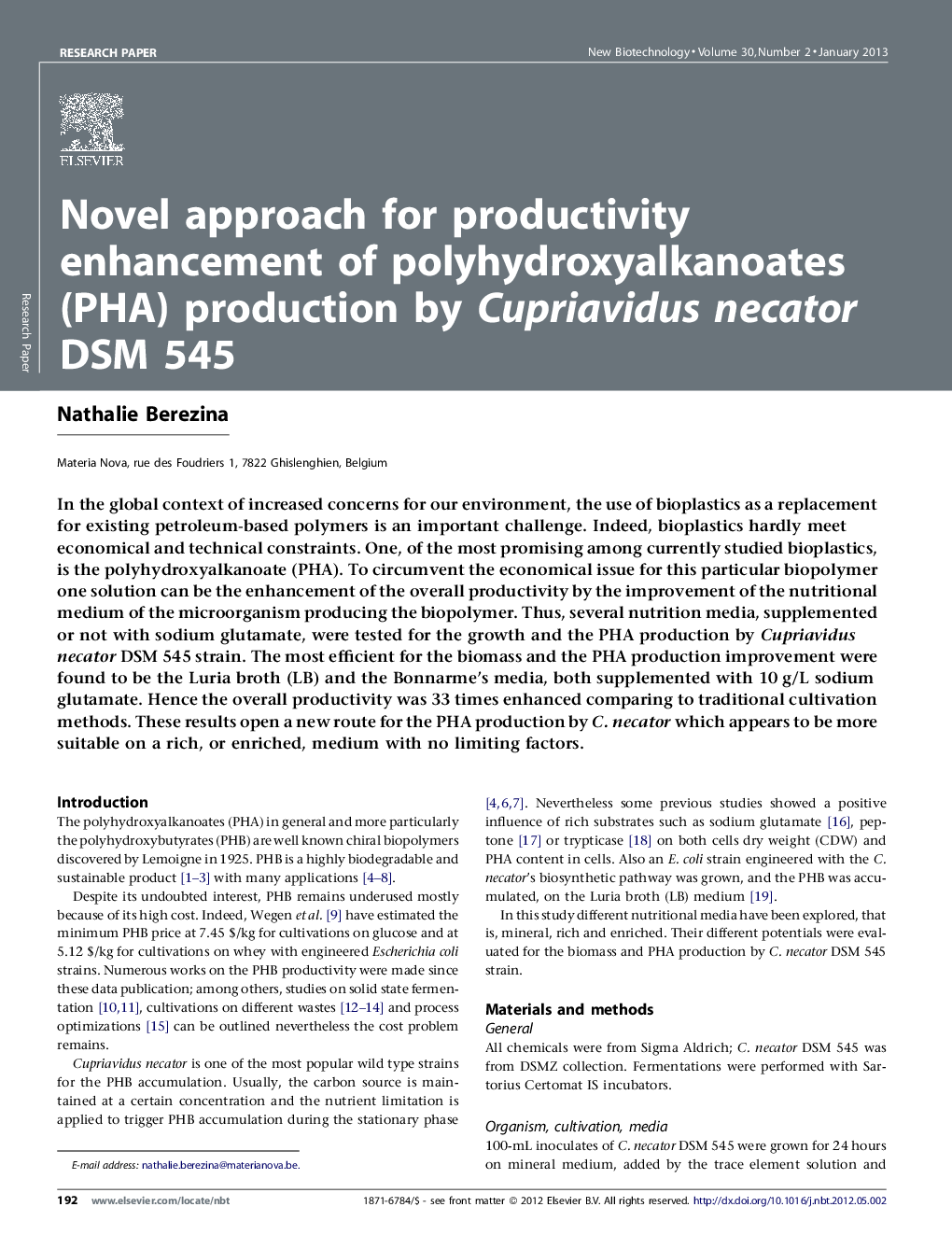| Article ID | Journal | Published Year | Pages | File Type |
|---|---|---|---|---|
| 33419 | New Biotechnology | 2013 | 4 Pages |
In the global context of increased concerns for our environment, the use of bioplastics as a replacement for existing petroleum-based polymers is an important challenge. Indeed, bioplastics hardly meet economical and technical constraints. One, of the most promising among currently studied bioplastics, is the polyhydroxyalkanoate (PHA). To circumvent the economical issue for this particular biopolymer one solution can be the enhancement of the overall productivity by the improvement of the nutritional medium of the microorganism producing the biopolymer. Thus, several nutrition media, supplemented or not with sodium glutamate, were tested for the growth and the PHA production by Cupriavidus necator DSM 545 strain. The most efficient for the biomass and the PHA production improvement were found to be the Luria broth (LB) and the Bonnarme's media, both supplemented with 10 g/L sodium glutamate. Hence the overall productivity was 33 times enhanced comparing to traditional cultivation methods. These results open a new route for the PHA production by C. necator which appears to be more suitable on a rich, or enriched, medium with no limiting factors.
► Different nutrition media for productivity improvement were studied. ► Rich media appear more efficient. ► This method allows 33 times productivity improvement.
